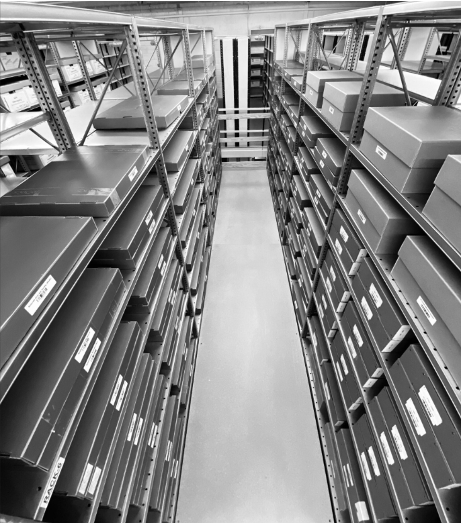Birth Information and Tracing Digitisation of Records
In 2022, the government introduced the Birth Information and Tracing Act, which gave the right to Irish people who were adopted, boarded out, the subject of an illegal birth registration or born in a Mother and Baby or County Home Institution to access to information about their birth, early life and care history. Within the Act, Tusla was given the duty to ‘retain and maintain all relevant records’, which created responsibility to begin an enhanced record digitisation programme. With the information previously being held by multiple organisations and sites around Ireland, it was a huge undertaking to amalgamate and categorise it and make it searchable for the staff of the Birth Information and Tracing (BIT) service so that people could receive the birth information they sought.
The gathering of data from local sources included millions of pages of paper, tens of thousands of files and ledgers, and indexes dating from the 1800s up to the mid-1990s. 39 record collections located in buildings across Tusla were created, these records holding vital information on the lives of Irish-born people from all over the world.
Working in collaboration with staff from the BIT service, the Records Management team in ICT have been digitising documents and developing a comprehensive document management system ever since.
 ‘It recognises the importance of a person knowing their origins and gives them access to information about their identity at birth, including access to their birth certificate, birth, early life, care and medical information that is available, as well as giving them access to a comprehensive tracing and reunion service,’ said Tusla’s Adoption Manager.
‘It recognises the importance of a person knowing their origins and gives them access to information about their identity at birth, including access to their birth certificate, birth, early life, care and medical information that is available, as well as giving them access to a comprehensive tracing and reunion service,’ said Tusla’s Adoption Manager.
Tusla was tasked under the Act with making all that information available to those seeking to apply for a service. The BIT service had to fit-out and staff a national contact and support centre, and, in collaboration with ICT, design and roll out an online application system integrated with TCM. Other work included developing a suite of standard operation procedures, communications planning, working on a public information campaign and commissioning a counselling service.
Digitisation of records was all the more important because the Act makes it a statutory obligation for information to be preserved and maintained for future generations.
But before files could be digitised they first had to be analysed by the team’s archivists to understand how the records were created and the logic of how they were arranged: how a ledger was linked to an index or linked to a file. Only then could the indexed and digitised images be imported to the document management system (a separate system to TCM).
Highlighting the importance of the process, Tusla’s ICT Manager said: ‘Even though these documents are historical, they are still in use daily to facilitate the delivery of the BIT service. We have to manage each stage of the process because the documents are so important. Not only do they need to be accessible now, but also into the future when software systems change. The files we’re creating now will be the archival tracing files of the future, so it’s our responsibility to maintain these records.’
So far, out of four million pages, almost 2.4 million have been digitised; 29 out of 39 record collections are processed, and more than 40,000 out of 90,700 files have also been digitised.
Thanks to collaborative work across the Adoption and ICT departments, digitisation has helped support thousands of people in their search for vital birth information. In fact, as of 3 March 2025 a total of 9,553 applications for a birth information service were processed and completed by Tusla, plus a further 6,807 applications for a tracing service.
‘The service is compliant with the statutory timeframe for processing applications for information, which is between 30 and 90 days, depending on the complexity of the request. The average time to process an application for information is now 15 working days, and although there is a waiting list for a social work tracing service, plans are in place to reduce that waiting time. This has been a very good partnership between Records Management and the Adoption, Birth Information and Tracing Services,’ added the Adoption Manager.
The Assistant National Director for Practice Reform and Change, who was designated sponsor of the BIT programme, is clear about the impact that the collaborative efforts have had.
Echoing the ICT Manager’s words, he said, ‘There has been a lot of learning to take on board when it comes to the records we are creating today for children in the future. There are thousands of people whose lives have been changed forever or affected by [this] work.’

